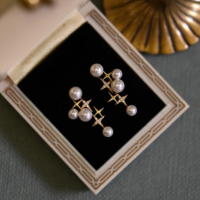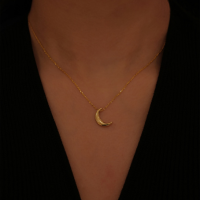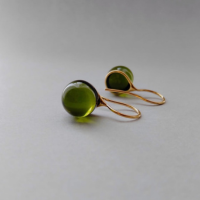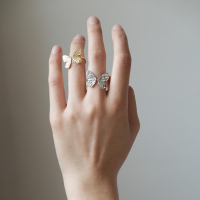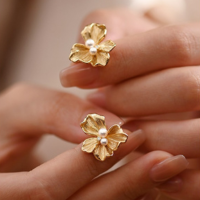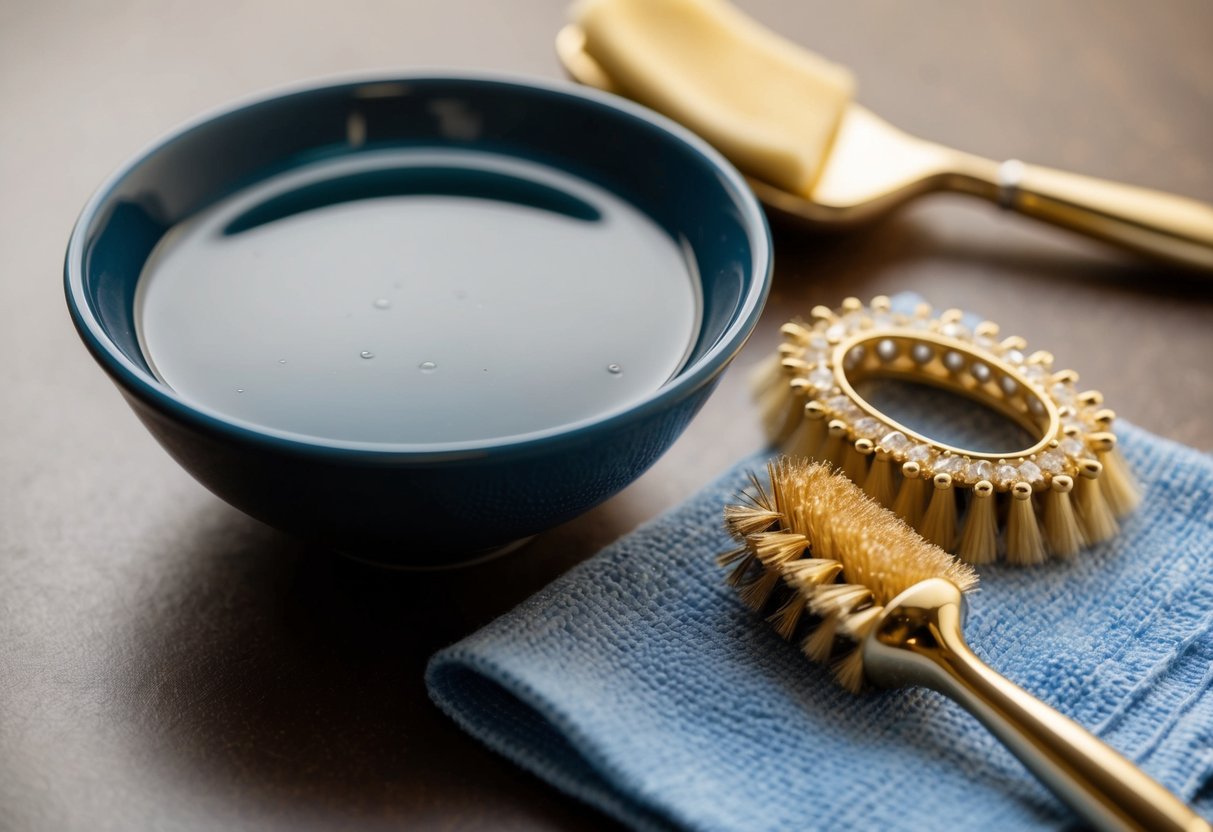
What Does FAS Mean on Jewelry
Check out our personalized jewelry collections! (kids drawing jewelry, coin jewelry, wire jewelry, fingerprint jewelry, handwriting jewelry, and more)
In the world of jewelry, we often come across various stamps and markings that can be confusing. These tiny letters and symbols tell us a lot about the piece's origin and materials. The 'FAS' stamp found on many jewelry items stands for "Fashion Accessories." It's commonly used to signify pieces made from materials like sterling silver, often combined with more affordable metals to achieve a stylish look without breaking the bank.
Our interest in these markings isn't just about knowing what we own. It's also about ensuring we get the quality and style we expect. By understanding these marks, we can make smarter choices when adding to our jewelry collections. Each mark has its story and helps us connect with the craftsmanship of these beautiful pieces.
As we explore the world of jewelry stamps, let's keep in mind the importance of properly maintaining and assessing our jewelry. It extends beyond aesthetics to ensure longevity and responsible ownership. In sharing these insights, we aim to enhance our appreciation for these treasured items.
Key Takeaways
- 'FAS' means "Fashion Accessories" on jewelry.
- Made with sterling silver and other metals.
- Helps identify the materials and style.
Understanding 'FAS' Stamp Significance
When we come across an FAS stamp on jewelry, it piques our curiosity about its meaning and importance. This marking holds a wealth of insights regarding the piece's origin and quality.
Origins and Meaning
The "FAS" stamp often stands for "Fine Art Silver." It's used by some manufacturers to denote that the jewelry piece contains a significant amount of silver. Typically, the silver used is sterling silver, which is 92.5% pure silver mixed with 7.5% of other metals, usually copper. This combination is popular because it’s durable and resists tarnish better than pure silver. When we see FAS on a piece of jewelry, it gives us a clue about the craftsmanship and materials used.
The origins of the FAS stamp can be somewhat challenging to track precisely. Various brands and regions have adopted similar marks, which can occasionally lead to confusion. It's important for us to verify the source if we're seeking pieces with a guarantee of quality. Knowing this background can help us appreciate the jewelry's value better and ensure it meets our expectations.
Implications on Value and Authenticity
The FAS stamp is often considered a mark of authenticity, indicating that we are dealing with genuine sterling silver. This can be particularly reassuring in a market where imitation materials are common. Buyers often seek these markings as they suggest a higher level of trust. However, it's still wise to confirm authenticity through other tests like magnet checks, which don't react with real silver.
Regarding value, jewelry with an FAS stamp may hold more worth than pieces lacking such marks, provided the hallmark is authentic. Yet, the FAS stamp alone doesn't guarantee the highest value in the silver market. Other factors like design, craftsmanship, and rarity also play crucial roles. It's crucial when considering a purchase or appraisal to take these elements into account along with the FAS stamp.
Materials and Quality
When it comes to jewelry with "FAS" marked on it, it's essential to understand the materials used, such as gold and silver. These materials affect the quality, appearance, and durability of the piece.
Gold Purity
Gold in jewelry is often measured by karats. 24K is pure gold, while 18K and 14K are mixes with other metals to make it stronger. 14K gold, for instance, contains 58.3% gold, making it more durable than higher karats for daily wear. This lower karat gold is less expensive, yet still holds value and provides the classic gold appearance.
Gold-plated jewelry is another option. It's less costly as it uses a thin layer of gold over another metal like copper or silver. Though not as valuable, it gives the appearance of gold at a lower price point. It's crucial to check if the gold meets personal preferences for both purity and budget.
Silver Standards
Sterling silver is common in jewelry and marked as "925". This mark means that the metal is 92.5% pure silver, with the rest being other metals like copper. This creates a robust yet beautiful material that's great for crafting intricate designs.
Some pieces may be silver-plated, which involves coating a base metal with a thin layer of silver. Silver-plated items are affordable but can wear over time, revealing the base metal underneath. When choosing silver jewelry, consider if you want the durability of sterling or the price benefits of silver-plated.
Identification and Assessment
To determine the authenticity and value of jewelry marked with "FAS," we should focus on careful observation and expert evaluation. Observing jewelry's physical attributes gives us clues about its makeup. Consulting professionals provides more assurance on its history and worth.
Visual Inspection Tips
First, let's examine the jewelry closely. Inspect the markings on the piece. Jewelry stamped with "FAS" stands for "Fused Alloy Silver." Check for clarity: the letters should be crisp and not worn down.
Examine the metal's hue. A slight silver sheen signals authenticity. If the piece looks too shiny, question its worth. Use a magnet to check its response; genuine silver won't stick.
Look for tarnishing. Real silver will tarnish over time. These visual cues guide our first steps.
Professional Appraisal Guidance
While personal inspection is helpful, consulting a professional ensures certainty. Qualified appraisers evaluate worth accurately. They can differentiate real silver from imitations effortlessly.
Ask about their credentials. Ensure they have a reputation backed by any relevant certifications or affiliations. A thorough evaluation includes checking the piece under a magnifying glass and other tools.
Knowing a professional's assessment is vital for true value verification. Estimates from appraisals help us decide on purchases confidently. Rely on professional advice for the best valuation.
Care and Maintenance
To keep jewelry marked "FAS" looking its best, proper care is essential. We will cover cleaning techniques and storage solutions that will help maintain its shine and condition.
Proper Cleaning Techniques
Cleaning "FAS" jewelry regularly is important. We suggest using a soft cloth or a lint-free fabric. Avoid harsh chemicals, if possible. A gentle mix of warm water and mild soap works well for most pieces. Dip a soft brush into the soapy water and gently scrub the jewelry to remove any dirt or oils.
Be careful with any treatment or plating of the jewelry. Test a small area first to ensure that the cleaning solution doesn't damage the finish. For heavily soiled pieces, consider professional cleaning services.
Rinse the jewelry under lukewarm water. Make sure all soap residues are removed. Use a soft cloth for drying. Keep it simple and gentle.
Long-Term Storage Solutions
When not worn, proper storage keeps jewelry safe and free from damage. We find that a specialized jewelry box with soft lining is ideal. This helps prevent scratches and tarnishes. Compartments will help keep pieces separated.
Avoid areas with high humidity. Moisture can damage metals and stones. Silica gel packets can be a good addition to storage areas. They help to control humidity levels.
For travel, using soft pouches or travel cases keeps jewelry protected. And, ensure chains or delicate pieces are not tangled or pinched. Prioritizing light and soft contact in storage is key to retaining the jewelry's beauty.
Legal and Ethical Considerations
FAS on jewelry comes with a range of legal and ethical aspects. It involves understanding both the laws protecting trademarks and consumer rights.
Trademark Laws
When we see "FAS" on jewelry, it likely indicates a maker or brand. Trademark laws protect these names and logos. They help the brand keep their identity and reputation intact. If someone uses a trademark without permission, legal actions can follow. Brands register these marks to safeguard against unauthorized use.
Using someone else's trademark on your jewelry affects trust. Customers might think they're buying from the original brand without realizing it's different. So, it's important to respect trademark rules to ensure fair competition. We must also be cautious when creating or selling jewelry with such marks to avoid infringement.
Consumer Protection Rights
Our rights matter when we buy jewelry. Consumer protection laws help us by ensuring we get what we expect. If "FAS" is marked, it should reveal true information about the jewelry's quality or origin. Misleading customers with incorrect labels can lead to legal issues.
Retailers should have clear descriptions. We need to ensure that we're buying genuine products and not being misled. It's helpful to check return policies and guarantees too. By being informed, we can better safeguard our interests while shopping for beautiful pieces to add to our collections.
Frequently Asked Questions
We're excited to explore some of the mysteries behind FAS stamps on jewelry pieces. Understanding these marks can help us appreciate the quality and significance of our jewelry collections.
How can I determine the worth of jewelry with a 925 FAS stamp?
The "925" mark indicates that the jewelry is made of sterling silver, which is 92.5% pure silver. The FAS stamp shows the manufacturer's branding or quality assurance. To assess worth, consider both the silver content and brand reputation.
What does the stamp on silver jewelry signify in terms of value and quality?
The 925 mark stands for sterling silver, a high-quality material. FAS, often part of a manufacturer's mark, doesn't necessarily add value but assures that the piece is genuine. Brands might use it alongside their unique stamp.
Could you explain the meaning behind "FAS" on ring bands?
On ring bands, FAS typically aligns with the brand or manufacturer's specific guideline for quality control. It serves as an identifier but doesn't automatically change the ring's base value as determined by the main metal used, like sterling silver.
In reference to necklaces, what is indicated by the engraving "FAS"?
When we see FAS engraved on necklaces, it often represents the maker's guarantee of quality. It ensures the piece adheres to high standards set by the brand. It works in conjunction with the 925 mark to confirm sterling silver.
What details should I know regarding 925 FAS gold in jewelry pieces?
925 FAS gold might cause confusion because 925 traditionally refers to sterling silver. If a piece is marked 925 FAS with gold color plating, it's likely sterling silver that's been gold-plated. It's fashionable but might not have the same value as solid gold.
Can you clarify what "FAS" stamped on a piece of jewelry generally means?
FAS stands for "Fine Art Silver" or a similar designation used by some brands. It’s essentially a mark of assurance. It doesn’t directly affect the piece's value but helps in identifying pieces from specific manufacturers known for quality.

